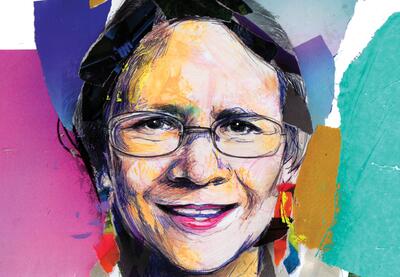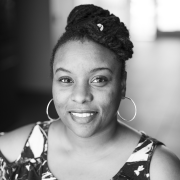Debbie Reese, Ph.D., is an activist, scholar and former elementary school teacher. With Jean Mendoza, Ph.D., she adapted the award-winning book An Indigenous Peoples’ History of the United States for Young People from Roxanne Dunbar-Ortiz’s original for adults. A member of the Nambé Owingeh nation, Reese founded in 2006 American Indians in Children’s Literature (AICL), an online resource providing analyses of representations of Indigenous peoples in children’s and young adult books. She has lectured widely and has published across multiple academic disciplines.
Reese recently shared her thoughts with Learning for Justice about the most recent spate of book-banning campaigns that began in earnest throughout the United States in 2021. This interview has been edited for length and clarity.
Lawmakers around the nation want to ban books in schools that challenge white-centric narratives and offer more honest retellings of history. This includes An Indigenous People’s History of the United States for Young People. What is the danger in such bans?
Back in 1990, Dr. Rudine Sims Bishop published an article that became a powerful framework for educators. That article is “Mirrors, Windows, and Sliding Glass Doors.” In it, she said that books can be windows, offering a view of a real or imagined world where things were familiar or strange to the reader. Windows could also be like sliding glass doors. A reader opens the door and walks in, to become part of whatever an author provides. And, she said, when the light is just right, a person can see themselves reflected in a window, similar to gazing into a mirror.
Today—more than ever before—children from groups that have been marginalized by mainstream U.S. institutions can find books that affirm their existence. The increase of Native authors who write for children is small but significant. Editors used to tell Native authors that the characters and storylines of manuscripts they were submitting for publication would not sell. The reason? Their stories did not match the public perception of who Native peoples are. In other words, if it wasn’t a character in feathers who was either a savage aggressor or a tragic figure who greeted everyone with a palm raised to say, “How,” the book would not sell. That perception is based upon stereotypes created primarily by non-Native writers. Those stereotypes misinform readers and perpetuate a cycle of ignorance that is difficult to interrupt.
In 2022, the majority of children’s books by Native writers are ones set in the present day. In the last few years, we’ve also seen an increase in nonfiction by Native writers. To circle back to Bishop’s metaphor, Native kids are able to find mirrors that reflect who they are. These books hold truths. Truths, however, are perceived as inappropriate.
Here’s an example: The politically conservative “Moms for Liberty” group that is challenging books at school board meetings across the country objects to Aliki’s biography of Johnny Appleseed. Published in 1963, the book has stereotypical imagery of Native peoples in it but is—unfortunately—included in the Wit & Wisdom curriculum used by many schools in the U.S. In their video, a mom says that Johnny Appleseed is usually a great story, but “about three-quarters of the way into the book, there’s the angry white people, the mean white people that are chasing the Indians from their homes; [it] shows the conflict between the white settlers and the Native Americans.”
There was, in fact, conflict. Native peoples were defending their homelands and families from white settlers who wanted to take that land for themselves. Those are facts, but Moms for Liberty thinks teachers should use a happier version of the Johnny Appleseed story. I think it is safe to say they want a happier version of U.S. history. The book Jean Mendoza and I adapted is An Indigenous Peoples’ History of the United States for Young People. Written for middle grade students, the book has truths about history that I am certain would be read aloud, indignantly, at school board meetings if those challenging it have actually read the book. Our adaptation is included on lists of books that politicians and parents do not want in their schools.
Book Riot did an analysis of books being challenged and concluded that most of them are ones with LBGTQ+ content. Last year [U.S. Rep.] Sharice Davids published her autobiographical picture book, Sharice’s Big Voice: A Native Kid Becomes a Congresswoman. When Davids and [current U.S. Secretary of the Interior] Deb Haaland won their campaigns for Congress in 2019, Native families across the country were overjoyed! Native representatives in the U.S. Congress are rare. In her book, Davids talks about two things that Moms for Liberty and other book-banning campaigns would object to: the history of her nation’s treatment by the U.S. government and her identity as a lesbian.
On one page, Davids wrote about her tribal nation being in two states (Nebraska and Wisconsin) because “the U.S. government forced tribes to move away from their homelands.” The accompanying illustration shows a soldier pointing his rifle at Native people. There are also pages in the book where Davids wrote about being a lesbian. On the second page (the book pages are not numbered), she says she had a lot of doubters during the race. “They thought I couldn’t win based on what I look like, who I love, and where I started,” Davids explains. On the final page, she writes that growing up, she had no idea that she “would be one of the first Native American women in Congress and the first lesbian representative from Kansas.”
A strong sense of justice can form in a young child’s mind when they read books that tell the truth. When they grow into adulthood, that sense of justice can guide them in how they vote and where they work.
What, I wonder, do the book banners want in schools? With their campaigns, they are taking away mirrors for kids who so desperately need and deserve to see themselves in books. And they’re depriving others of windows into other peoples’ lives—windows that provide perspectives that they didn’t have access to before!
People are reportedly objecting to certain books because they fear students will feel some guilt or discomfort about their race or gender, or that it creates anti-American sentiment. But there are rarely considerations for the discomfort of, for example, Native students seeing their histories or cultures misrepresented. What do you think is behind this response to truth-telling?
Fear of a just society. If we were, in fact, a just society, treaties made between the U.S. government and tribal nations would be respected in ways they have not been, in the past and present. Respecting them, however, could mean loss of resources—and money—to non-Native people and corporations who want to forge ahead with pipelines and developments that deconsecrate Native lands and put resources like clean drinking water at risk. A strong sense of justice can form in a young child’s mind when they read books that tell the truth. When they grow into adulthood, that sense of justice can guide them in how they vote and where they work. If they work in Congress, they would join someone like Sharice Davids in bills she proposes and supports that are forward-looking with respect to things like water.
You do events promoting authentic representation for stories by and about Indigenous peoples. So much of the public conversation is about the negative effects of that representation’s absence. What positive effects do you see when it’s there?
I have not seen any studies that empirically document the positive effects of books by Native writers. An example of something similar is the studies done by researchers in Tucson, Arizona, when the Arizona legislature felt that the Mexican American courses in the Tucson schools were teaching kids “how to overthrow the U.S. government.” Those courses had been in place for many years. In them, Latinx children learned about Latinx peoples. They read stories written by Latinx writers. The studies showed improvements in attendance, grades and graduation rates by students who had taken the courses. They felt empowered! That empowerment, however, was perceived as a threat, and lawmakers in Arizona passed a ban on ethnic studies courses. It seems reasonable to say that legislators are passing similar laws across the country.
With their campaigns, they are taking away mirrors for kids who so desperately need and deserve to see themselves in books.
Why is it important that all children be exposed to books told from Native perspectives? Why is it critical to have more Native-centered books in classrooms and libraries?
In terms of population, we are few in comparison to nearly all other groups. Children from the other groups will grow up and become policymakers or people who influence policy. If they read Native books and develop empathy for us—if they come to see us as human beings—my hope is that their actions will be shaped by us rather than by stereotypical kinds of information. If they are not involved in work of that kind, they may be in other places of influence. If they’re parents, they’ll choose better books for their children. If they are teachers, they’ll teach about us by using books by us.
Earlier, you referenced Bishop’s “Mirrors, Windows, and Sliding Glass Doors.” How do you believe these book bans will affect students’ abilities to imagine and create a more just world?
In psychology, there is a theory that I think applies to the impact mirror books can have on a reader. The theory is “possible selves.” It was developed by Dr. Hazel Markus in the 1980s. I came to know of it through reading the studies she and Dr. Stephanie Fryberg did on mascots. Possible selves are images of the self that a person hopes to become. The images motivate sustained, goal-directed behavior and can play a role in attainment of future goals. Earlier I referenced a book about a lesbian Native woman who is now in Congress. That book contains images that function, for lesbian and/or Native readers, as a possible self. I believe that books by Native writers provide Native children with an array of possible selves that has not existed in the past.
How can parents, educators and community members effectively work against efforts to prohibit accurate, honest teaching and books that contain more diversity in perspectives?
There is an impetus to “buy the book” that is being challenged or banned, and that may make the buyer feel like they’ve done something good. It may be good for the author and publisher, but an important point is circulating on social media: It does nothing for the children in the classroom who are being denied access to the book. A better strategy is to go to school board meetings when books are being challenged. Defend the books there and on social media, and campaign for and vote in local elections. They matter so much to the well-being of communities.
In what ways can teachers be more culturally responsive to Native students?
Our children are Native every day. But in far too many places, books by Native writers are only brought into the classroom in November [during Native American Heritage month]. We are who we are, all year long. Use the books, all year round. Bring those possible selves into the classroom as a matter of course so that Native children’s identities are affirmed, every day. That affirmation of white children is the default. It happens for them, every day. Our children deserve that, too.

